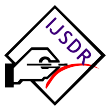Imp Links for Author
Imp Links for Reviewer
Research Area
Subscribe IJSDR
Visitor Counter
Copyright Infringement Claims
Indexing Partner
|
Published Paper Details
|
|
| Paper Title: | EVALUATION OF MESIOBUCCAL ROOT CANAL ANATOMY IN THE FIRST AND SECOND MAXILLARY MOLARS AMONG MALES AND FEMALES USING CBCT |
| Authors Name: | Tandra Das , Dr. Pradeep S |
| Unique Id: | IJSDR2003011 |
| Published In: | Volume 5 Issue 3, March-2020 |
| Abstract: | Research title : Evaluation of Mesiobuccal root canal anatomy in first and second molars among males and females Introduction : The objective of successful endodontic therapy is thorough mechanical and chemical cleansing of the entire root-canal system and its complete obturation with an inert filling material . Therefore, the ability to locate all the canals in this system is an important factor in determining the eventual success of the case. If a canal is not detected, it cannot be cleansed and filled and is a potential cause of failure of endodontic therapy. It has been known that maxillary molars often have two canals in the mesiobuccal root. Inability to locate, instrument, and obturate the second mesiobuccal canal (MB2) could lead to endodontic failure in these teeth. The challenge for the clinician in successfully treating maxillary molars is locating the MB2 canal. Aim : The aim of this study was to investigate the prevalence and anatomy of the MB2 that may vary between male and female patients which can be challenging for root canal treatment Materials and methods : 100 CBCT’s of Patient attending Saveetha Dental College were considered in which 50 were males and 50 female. The presence or absence of MB2 canal was determined in the study group. Results: The present study was mainly aimed at determination of the frequency of MB2 canals and their configuration types according to the classification of Vertucci [19] in the first and second molar teeth of the maxilla. According to this study MB2 canal was seen among 82% males and 58% females in maxillary first molars. Among which 2-1 Type- II configuration(Vertucci’sclassification ) was seen in 80% of the males and the remaining 14% had 2-2 Type -IV configuration, 5% had 3-1 type configuration and 1% had 3-2 Type configuration. females with 2-1 configuration were 92% and 2-2 configuration was seen in 6%, 2% showed 3-1Type configuration . In maxillary second molars MB2 canal was seen in 72% of the males and 42% females . Among 72% males , 94% had 2-1 configuration and 6% had 2-2 configuration, whereas among 42% females 98% has 2-1 configuration 2% had 2-2 configuration. Conclusion: It is evident that most of the molars have fourth canal in the mesial root . So it is important to detect the canals for the success of root canal treatment. These data are of great importance, and endodontists must be aware of it, since not only the fact that the second canal is of small volume, its anatomy can be responsible for the failure of endodontic treatment, and once when it is not obturated, leaves the apical foramen open and the canal exposed at the treatment ending. Therefore, professionals are encouraged to request high-resolution CBCT before performing endodontic treatment in maxillary first molars, given that this examination is able to highlight this channel, and reveal its anatomy in detail. |
| Keywords: | Mesiobuccal , CBCT, Maxillary molars, Root Canal morphology ,Endodontics |
| Cite Article: | "EVALUATION OF MESIOBUCCAL ROOT CANAL ANATOMY IN THE FIRST AND SECOND MAXILLARY MOLARS AMONG MALES AND FEMALES USING CBCT", International Journal of Science & Engineering Development Research (www.ijsdr.org), ISSN:2455-2631, Vol.5, Issue 3, page no.50 - 54, March-2020, Available :http://www.ijsdr.org/papers/IJSDR2003011.pdf |
| Downloads: | 000337212 |
| Publication Details: | Published Paper ID: IJSDR2003011 Registration ID:191385 Published In: Volume 5 Issue 3, March-2020 DOI (Digital Object Identifier): Page No: 50 - 54 Publisher: IJSDR | www.ijsdr.org ISSN Number: 2455-2631 |
|
Click Here to Download This Article |
|
| Article Preview | |
|
|
|
Major Indexing from www.ijsdr.org
| Google Scholar | ResearcherID Thomson Reuters | Mendeley : reference manager | Academia.edu |
| arXiv.org : cornell university library | Research Gate | CiteSeerX | DOAJ : Directory of Open Access Journals |
| DRJI | Index Copernicus International | Scribd | DocStoc |
Track Paper
Important Links
Conference Proposal
ISSN
 |
 |
DOI (A digital object identifier)
  Providing A digital object identifier by DOI How to GET DOI and Hard Copy Related |
Open Access License Policy
Social Media
Indexing Partner |
|||
| Copyright © 2024 - All Rights Reserved - IJSDR | |||






Facebook Twitter Instagram LinkedIn